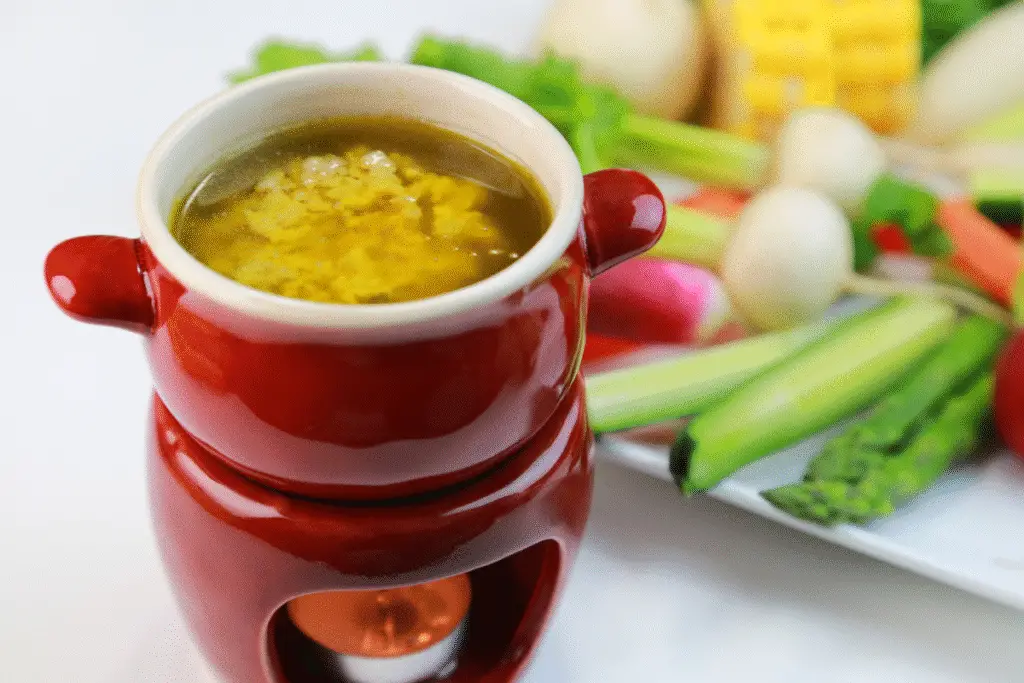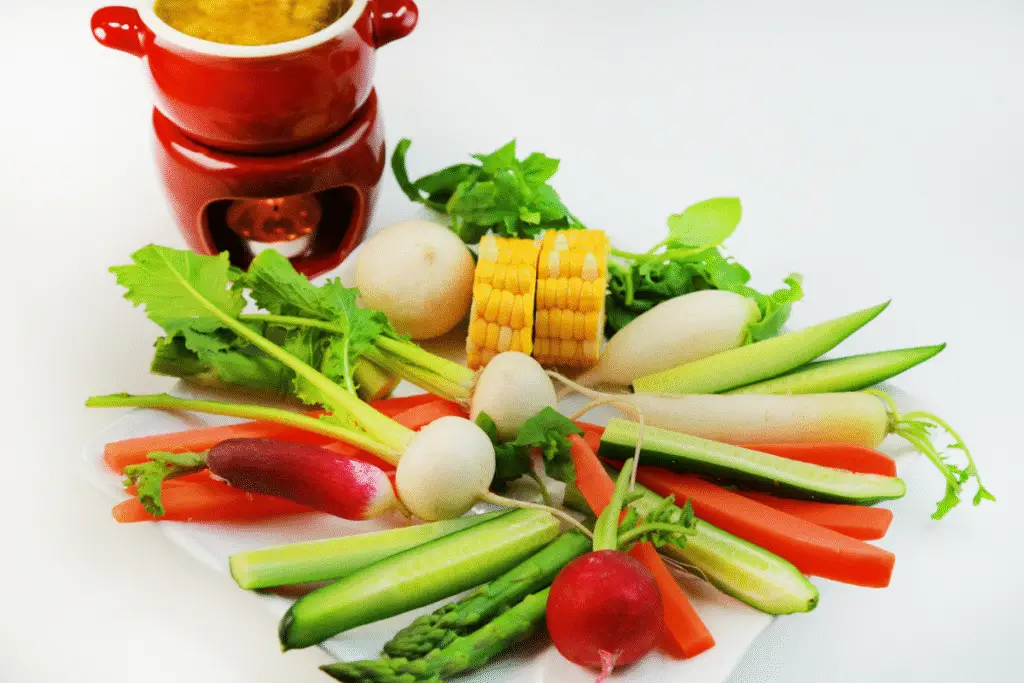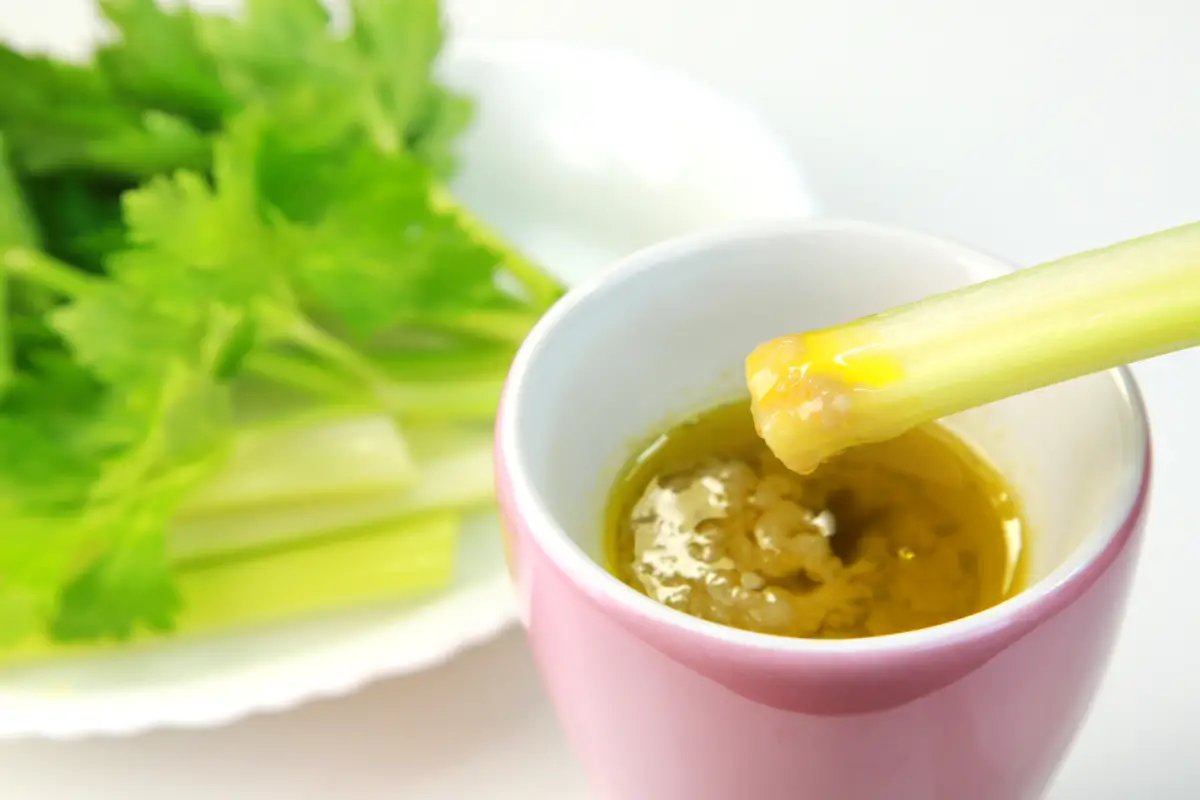If you want to make an authentic Italian bagna cauda, the key ingredients are garlic, anchovies, and olive oil gently cooked into a warm, flavorful dip. This traditional Piedmontese sauce is perfect for dipping fresh vegetables or spreading on crusty bread.
My version of the bagna cauda recipe includes an optional touch of cream, which softens the intense flavors and adds a smooth texture. It’s an easy way to enjoy this classic dish with a slightly richer twist without losing its original character.
I’ll guide you through each step, explaining how to balance the ingredients so you get a sauce that’s savory and inviting. Whether you stick to the classic or try the creamy variation, you’ll have a reliable recipe to bring a taste of Italy to your table.
My Bagna Cauda Recipe
I make Bagna Cauda using a simple mix of garlic, anchovies, olive oil, and butter. The garlic is gently cooked until soft but not browned, which helps keep its flavor mild and rich.
Anchovies dissolve in the warm oil, creating a savory base. I typically use about 10 garlic cloves and 8 anchovy fillets for a small pot enough to serve four.
Here’s a quick list of ingredients I use:
- 10 garlic cloves, peeled
- 8 anchovy fillets
- 1/2 cup olive oil
- 2 tablespoons butter
I start by crushing the garlic lightly, then simmer it slowly with the anchovies in olive oil. Butter is added at the end to enrich the sauce and smooth the texture.
This sauce is perfect for dipping fresh raw vegetables like bell peppers, celery, and fennel. I like to keep it warm while serving to maintain its silky consistency.
You don’t need cream for the traditional sauce, but it’s optional if you want a creamier texture. In that case, I add a small amount of heavy cream toward the end and stir gently.
The process is straightforward but requires attention to temperature to avoid burning garlic. The flavor is umami-rich, lightly pungent, and deeply comforting.
Italian Bagna Cauda Recipe

Bagna Cauda is a traditional Italian dip from the Piedmont region. It’s made with simple ingredients but delivers a rich, savory flavor.
The key components are anchovies, garlic, olive oil, and butter. I start by gently cooking minced garlic and anchovies in olive oil until they melt together into a smooth sauce.
Here’s a quick rundown of the ingredients I use:
| Ingredient | Amount |
|---|---|
| Garlic | 6-8 cloves, minced |
| Anchovy fillets | 8-10, finely chopped |
| Olive oil | 1 cup |
| Butter | 4 tbsp |
I melt butter into the olive oil over low heat, then slowly stir in garlic and anchovies. The mixture should be warm and silky, not boiling.
To serve, I keep it warm in a small pot and dip in fresh vegetables like bell peppers, fennel, radishes, and boiled potatoes. The mild bitterness of raw veggies contrasts well with the garlicky, salty sauce.
Bagna Cauda works best when eaten slowly, letting the flavors develop while you dip and enjoy. It’s a simple, rustic recipe that highlights the quality of each ingredient.
Bagna Cauda Recipe With Cream

I like to add cream to traditional bagna cauda for a smoother, milder flavor. The cream softens the strong taste of garlic and anchovies without overpowering the dish.
Start by melting butter in a small pan over low heat. Then, add finely chopped garlic and anchovies until the mixture becomes fragrant and the anchovies dissolve.
Next, pour in about ¼ cup of heavy cream. Stir gently and let it warm without boiling. The sauce should be rich and silky, perfect for dipping.
Here’s a simple ingredient list:
| Ingredient | Quantity |
|---|---|
| Butter | 3 tbsp |
| Garlic (minced) | 4-5 cloves |
| Anchovy fillets | 6-8 |
| Heavy cream | ¼ cup |
| Olive oil | 2 tbsp |
Olive oil is added last to enrich the sauce. I always keep the heat low to prevent the cream from curdling.
Serve the bagna cauda warm. It pairs well with raw or roasted vegetables like celery, carrots, and bell peppers. This creamy version makes the dipping experience more approachable for those sensitive to intense flavors.
Final Thoughts
Bagna cauda is more than just a dip — it’s a cozy, flavorful tradition that brings people together around the table. Whether you go for the classic version or try it with a creamy twist, this rich Italian sauce is perfect for slow, mindful snacking with your favorite fresh veggies or warm, crusty bread. I hope this recipe brings a little taste of Piedmont into your kitchen and becomes one of those dishes you come back to again and again. Let me know in the comments if you tried it and how you served it — I’d love to hear your twist!






